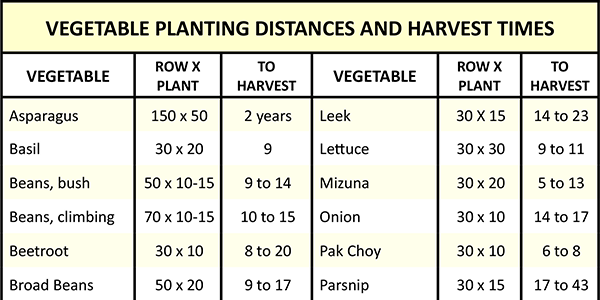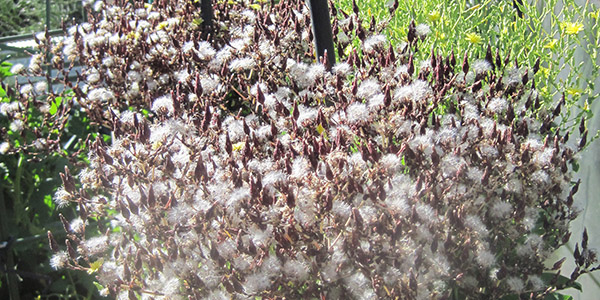When building a raised vegetable bed on a lawn it is important to remove all traces of that lawn so that invasive grasses (such as couch) do not infest the new bed. This page offers step by step instructions on how to do this without having to dig up all the grass.
The photos on this page were taken for demonstration purposes only. A raised bed would normally be longer and made from thicker timber than the one photographed. However these photos do show the method I used to successfully build my raised beds on lawn.
1. Mark the outline of the frame
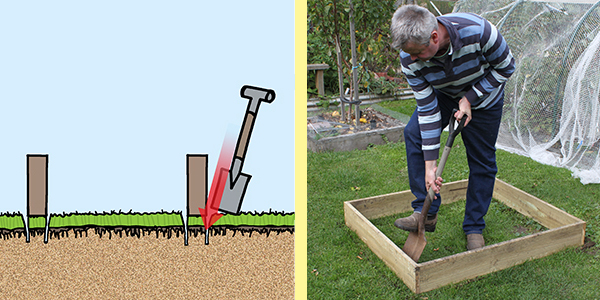
- CONSTRUCT THE RAISE BED AND PLACE IT EXACTLY WHERE YOU WANT THE BED TO GO
- WITH A SPADE CUT THE OUTSIDE EDGE OF THE FRAME TO A DEPTH BELOW THE LEVEL OF THE ROOTS OF THE GRASS
This is normally to a depth of about 5 cm deep. - REPEAT THE PROCESS ON THE INSIDE EDGE OF THE FRAME
2. Dig the outline trench
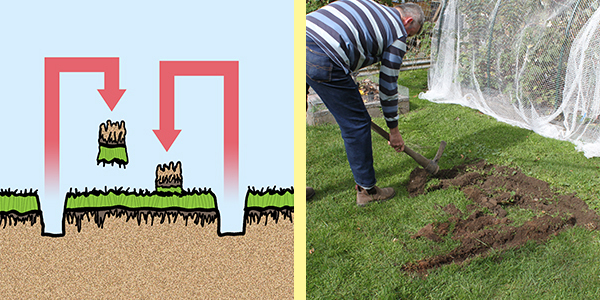
- TEMPORARILY REMOVE THE RAISED BED TO EXPOSE THE CUT LINE WITH A MATTOCK OR HOE DIG OUT THE CUT SECTION TO THE DEPTH OF THE SPADE CUT
This should be around 5cm deep. It should be to a depth below the root structure of the grass. - PLACE THE DUG OUT CLODS WITH THE GRASS TOP FACING DOWN IN THE RAISED BED AREA.
3. REPOSITION THE RAISED BED FRAME

- REPOSITION IN THE RAISED BED FRAME IN THE NEWLY DUG TRENCH
- IF THE FRAME IS SITTING ON SLOPING GROUND THEN DIG THE HIGH SIDE OF THE TRENCH DEEPER TO MAKE THE TOP OF THE FRAME SIT LEVEL
Do not make the low side shallower as this will give an entry point for weeds such as couch to get in.
4. Dig out the paths

- WITH A SPADE CUT AN EDGE WHERE YOU WANT THE PATH TO GO TO A DEPTH OF ABOUT 5 CM, THE SAME AS YOU DID FOR MARKING THE BASE OF THE FRAME IN STEP B
- DRIVE THE BLADE OF THE SPADE IN AT A LOW ANGLE AND PEEL THE GRASS UP IN SECTIONS
In doing so you should create sections of grass that resembles instant turf. - FLIP THE PEELED CLODS OF GRASS UPSIDE DOWN INTO THE BED
Try to spread these clods in the raised bed in an even manner so as not to create mounds.
5. Cover with newspaper
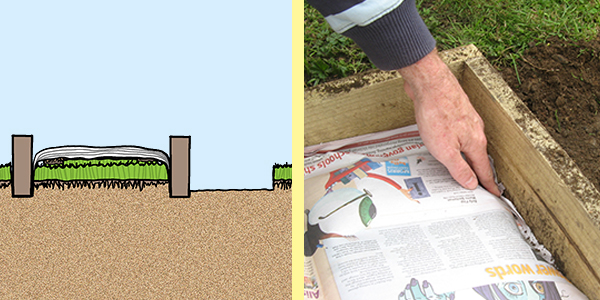
- COVER THE BASE OF THE BED WITH SEVERAL SHEETS OF NEWSPAPER, TUCKING THE NEWSPAPER IN TIGHTLY AT THE EDGES. Cardboard can also be used.
6. Dig out the paths

ADD A MIXTURE OF GOOD QUALITY SOIL, COMPOST, SHEEP, COW AND CHICKEN MANURE, STRAW, PEA STRAW, LUCERNE (ALF ALFA). SOME SAND AND A LITTLE ROCK DUST CAN ALSO BE ADDED BUT THIS IS NOT ESSENTIAL
Any combination is fine. It’s best to use what is cheapest and easiest for you to get. The balance of the soil can be adjusted in the first couple of seasons, the important thing is to get plenty of organic matter that will break down into good soil.PILE THIS MIXTURE UP ABOVE THE TOP OF THE RAISED BED, TRAMPLING IT DOWN AS MUCH AS POSSIBLE
7. Cover the bed with another layer of newspaper and straG
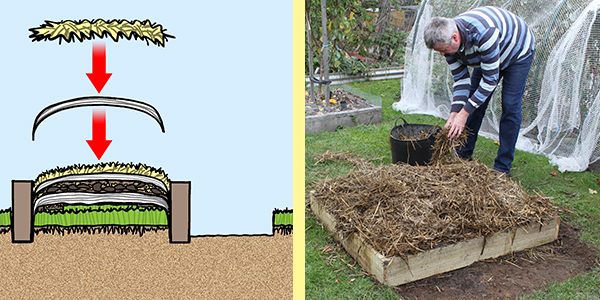
COVER THE TOP WITH FOUR OR FIVE SHEETS OF NEWSPAPER THEN TOP OFF WITH A LAYER OF STRAW, PEA STRAW OR LUCERNE (OR A COMBINATION OF THEM)
Pile the straw a good 10 cm above the top of the sides of the raised bed. When first filled the bed might be full to the brink but within a couple of months it will settle to below the top of the frame as the loose organic matter breaks down. Builders’ plastic can be used as an alternative to straw and paper, as long as it has no holes in it to allow light in.
8. COVER THE PATH AREA WITH GRAVEL
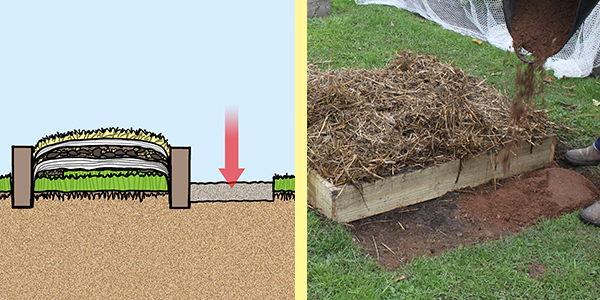
COVER THE PATH AREA WITH GRAVEL UNTIL IT IS LEVEL WITH THE SURROUNDING GROUND
There are several gravel types that will do the job. My preference is to use granite sand, however this may not be available outside of Australia. Granite sand packs down hard, which is ideal for stopping invasive grasses such as couch from re-entering the raised bed.Ideally the path should surround the raised bed, but if it doesn’t you need to use an alternative barrier to keep invasive grass out. For more information see Keeping Couch Grass Out Of Vegetable Beds.
9. FOLLOW UP ACTION
LEAVE THE BED FOR AT LEAST FOUR MONTHS TO ALLOW THE LOOSE ORGANIC MATTER (STRAW, PEA STRAW ETC.) TO BREAK DOWN AND ALL THE GRASS TO DIE
- REGULARLY MONITOR THE BED FOR SIGNS OF EMERGING GRASS SHOOTS
The grass in the bed should die due to the inability the shoots to penetrate through the cover to the sunlight. However If any shoots do break through then carefully dig down to find the base of each shoot and remove it. For more information on removing invasive grass shoots see Removing Couch Grass. - TURN THE BED IN WITH A FORK AND PLANT OUT
Once you are sure that the grass is all dead you can turn the bed with a fork and plant it out. The first crop planted should be seedlings or large seeds as the mixture in the bed will still be high in coarse organic matter which fine seeds will struggle to germinate in.


